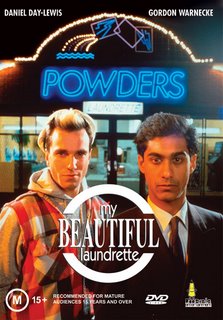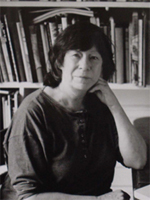HiStoRiCaL TeXtS..x

'Mind Your Language' (1992)
Director: Stuart Allen
Writer: Vince Powell
Genre: Comedy Sitcom
Synopsis: This sitcom was based around a white language teacher whom taught a group of foreigners English.
Research:
The series was known for its humorous take on national stereotypes: the German woman was dour and humourless; the French woman was sexy and flirtatious; the Swedish woman was liberated and straightforwardly sex-mad; the Chinese woman a rampant Maoist; while the SikhPakistani men were often on the brink of war, and the Spaniard, the Greek and the ItalianEnglish language, their often outrageous speech patterns and the students' hilarious mispronunciations of English. In the politically correct days of the late 1990s the show was criticised, but in its day the show was popular with people of many backgrounds because of its light-hearted take on multiculturalism and because it gave some otherwise unrepresented minorities a television presence. It was cancelled in 1979 by Michael Grade, then LWT's Deputy Controller of Entertainment, who considered the stereotyping offensive. Nevertheless it was sold to other countries where it found amazing popularity. and were macho. Much of the humour also stemmed from the trouble the students had with the
(http://en.wikipedia.org/wiki/Mind_Your_Language.com)
A statement from a review of ‘Mind Your Language’ on (www.bbc.com):
The scripts ensured that every possible foreign stereotype was milked, and to this effect the class included representatives from China, France, Germany, Greece, India (both Sikh and Muslim), Italy, Japan, Pakistan, Spain and Sweden. 'Please, let us have no racialism,' teacher Brown pleaded of his pupils in the opening episode, 'in this class all are equal.' All things being equal, then, it is fair to say that this was still very dodgy comedy, deriving easy laughs from 'foolish foreigners' and their linguistic difficulties. It may not have been racist, as some claimed, but it certainly wasn't clever.
‘Representing Black Britain’, by Sarita Malik:
Some of her comments of the sitcom are as follows…
‘…Asians or race were usually the butt of the joke, these comedies tended to hit a racist note, but always in a well meaning, benevolent tone.’
‘…never before had so many diverse races been seen in the same television frame, but hey had also never clung so tightly to their popular crude national stereotypes. Conveniently set in an in an English-language teaching centre, Mind Your Language set up the perfect opportunity to show the differences between various ‘foreigners’. The source of humour was not just racial difference, but more specifically non-Englishness (denoted in their accents, customs, clothes and the situations they would find themselves in.’
‘At the time, Humphrey Barclay (then Head of Comedy at London Weekend Television, which produced the majority of these comedies about race) defended the programme on the grounds that seeing difference races on-screen would familiarize and naturalize them to a White majority viewing public. This standard defence based on an unpersuasive multi cultural philosophy, supposed that some representation was better than none, and that putting something on screen would necessarily ‘unshackle’ it. In fact, it is quite possible to flaunt a multi-racial society without displaying any multicultural sensibility or awareness, and laughter does not necessarily mean that we have ‘overcome’ racism, but that we can, in fact, be in the midst of reproducing racist ideologies.’
Analysis & Links To My Text...
Although this particular text is a television series and not a film, there are still many comparisons that can be made in between the two. There are three Asian characters in ‘Mind Your Language’; the Indian lady and the Sikh and Muslin guy.
One of the similarities between ‘Bride & Prejudice’ and ‘Mind Your Language’ is that there is an evident use of stereotypes employed - although in different ways, however although ‘MYL’ was initially created as a light hearted comedy we cannot be sure of the genuine intentions of the creators because they were themselves white British. Due to this fact, it’s harder to assess whether the use of foreigners as the butt of the joke is simply amusement or even a way to showcase ethnic minorities on predominantly white television or is it in actual fact supposed to be offensive? Whereas, we know that the stereotypes we come across in ‘B&P’ aren’t intended in a racist or offensive way as the creators of this text are British Asian.
‘MYL’, looks at general representations of Asians; although there is an Indian lady, the emphasis is still upon the two Asian male characters, whereas in ‘B&P’ the representations we come across are more so of women.

‘Bhaji on the Beach’
(1992)
Director: Gurinder Chadha
Writers: Gurinder Chadha & Meera Syal
Genre: Comedy/Drama
Synopsis: Three generations of Indian women embark on a day trip to the British resort town of Blackpool: Asha, a woman in conflict between her traditional upbringing and modern British life; Ginder, an abused wife who has left her husband; Simi, a counselor at a shelter run for women; Hashida, a pre-med student who has just learned that she is pregnant by her black boyfriend, Oliver; Pushpa and Bina, two sari-clad, older traditional women; Rekha, a stylish visitor from Bombay; Amrik, Ginder's 5 year-old son; and two teenage girls, Ladhu and Madhu, who are only concerned with the local boys.
(http://uk.movies.yahoo.com/b/Bhaji-on-the-Beach/)
Research:
Bhaji on the Beach (d. Gurinder Chadha, 1994) was a surprise commercial and critical hit. It garnered numerous international awards, was nominated for a Bafta and won Chadha the Evening Standard Award for 'Newcomer to British Cinema.'
The trip is an opportunity to see their country, while confronting each other's values. The women come together when confronted by white racists, but the generations clash on the issue of traditional values. Hashida's pregnancy first provokes shock then a round of anti-black prejudice from the older women. Ginder is blamed for the collapse of her marriage and urged to return home.
Commitment, duty, honour, sacrifice - all the fossilised values which they have carried around for years are mercilessly questioned. These entrenched attitudes contrast sharply with those of a visiting Bombay relative, all slick slacks and western attire, who seems freer and more modern than the older women in their drab Saris, who cling to the ideas of the India they left behind. The women do begin to loosen up - particularly in a comic scene at a male strip joint. Finally, the appearance of Ginder's husband, and his violent public attack on her, causes a major re-evaluation of values. At the end, new notions of solidarity and sisterhood across the generations emerge as the women make their way home.
Bhaji on the Beach's comprehensive success reflects its ability to deal with complex issues in a simple and conventional narrative. In the process, it opens up, with humanity and warmth, the closed world of Asian women.
(http://www.screenonline.org.uk/film/id)
‘There's a line of dialogue in Bhaji on the Beach that sums up the film: "It's not often that we women get away from the patriarchal demands made on us in our daily lives, struggling under the double yoke of racism and sexism." When Simi says this, she does so with a broad smile. It's a serious statement, but not one ponderously made. And that seems to be Chadha's view of filmmaking: explore themes, but let the philosophical issues blend into the story, not dominate it. If she continues to abide by this creed, it may not take many more films before she's turning out pictures to rival Loach's Riff-Raff and Raining Stones.’
http://www.reelviews.net/movies/b/bhaji
Analysis & Links To My Text...
Although ‘Bhaji on the Beach’ is a slightly more recent text than ‘Mind Your Language’ dating back to 1992, I think this text has a better reflection of the differences and similarities between social attitudes and Asian representations then and now. Even from 1992 a lot has changed. ‘Bhaji on the Beach’ was Gurinder Chadha’s debut film – she is also the director of the text that I’m studying; ‘B& P’. I think that both films are a reflection of her wish to be able to demonstrate the lives of Asian women and the struggles they face in a battle between tradition and the changes in modern society.
‘My Beautiful Laundrette’ (1985)
Director: Stephen Frears
Writer: Hanif Kureishi
Genre: Drama
Synopsis: My Beautiful Laundrette is set within the Asian community in London, during the Thatcher years, and displays those values, of money but 'anybody can make it.' Omar gains the running of his Uncle Nasser's laundrette. He is helped by his friend Johnny who is an outsider, white but not entirely accepted by either the white or Asian Londoners. There are many memorable characters: Tania, Omar's cousin whom he might marry. Salim the manager of Nasser's garage and sometime drug importer. Rachel, Nasser's white mistriss, who like Johnny seems to be another outsider.
(http://www.imdb.com/title)
Analysis & Links to My Text...
'My Beautiful Laundrette' has less links with 'B&P' in the sense that the issues that are presented in this film are of a different nature - they come across as alot more serious than the other texts; mainly because the others are of a comedy genre whereas 'MBL' is a drama. This film focuses largely on racial hate issues aswell as the adjustments Asians had to make in settleing into Britain and adapting to its ways . Although, one way in which it does relate to 'B&P' is in the way that it subverts many stereotypes instead of conforming to them. For eg, the protagonist of this film - Omar is a homosexual.




